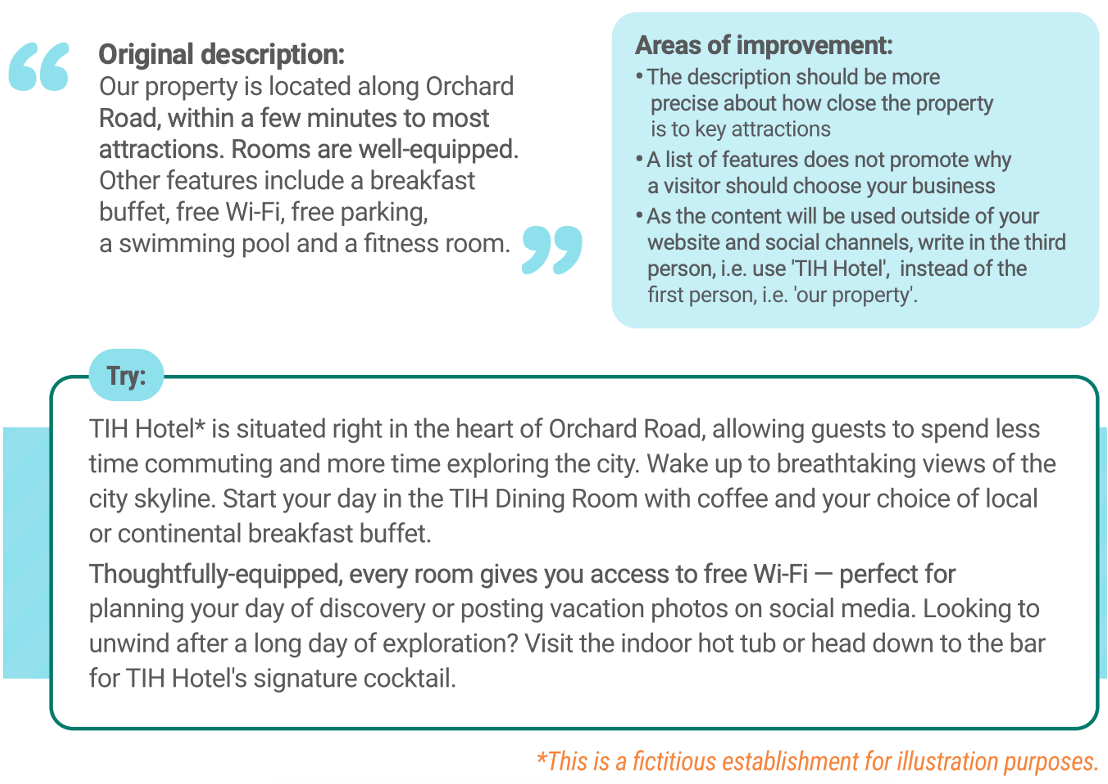Optimise Writing
Every Tourism Offering includes a description. The description emphasises unique selling points of your Tourism Offering. When written well, a description not only provides relevant information but also engages and attracts potential customers by showing them why they should visit your tourism offering.
List benefits, not features
Let your tourism product or experience shine by translating features into benefits. Examples:
| TIH Museum has free tours for visitors. | Who says that visiting Singapore has to be expensive? Stretch your dollar and see the city on a shoestring with our free daily tours. |
| TIH Bar is an award-winning bar. | Get to taste what experts have proclaimed to be the best cocktails in the world at TIH Bar — listed as one of the World's 50 Best Bars 2019. |
| TIH Bar has over 1000 types of whiskeys | TIH bar has one of Singapore's most extensive whiskey collections, where you can taste over 1000 types of whiskeys. |
Prioritise information
Make an impact on customers by including important information in the first sentence of your description.
| Information | Example |
|---|---|
Name of your Tourism Offering |
Housed in a 90-year-old Peranakan shophouse, TIH Cafe offers a modern twist to local hawker favourites. |
| Most interesting feature and benefit |
Be concise
Use short sentences and paragraphs to optimise readability of your description.
- Limit to 10 words per sentence.
- Every sentence includes one benefit.
- Use a new paragraph when describing a new idea.
- Sequence your description to show the most important information first. (e.g. first paragraph of description, first sentence of every paragraph)
Based on TIH's search algorithm, an updated listing is more likely to reach customers. See Edit listing to learn how to update your listing.
Resources
- Comprehensive Guide - Contributing Content.pdf (en, PDF, 4.7MB)

